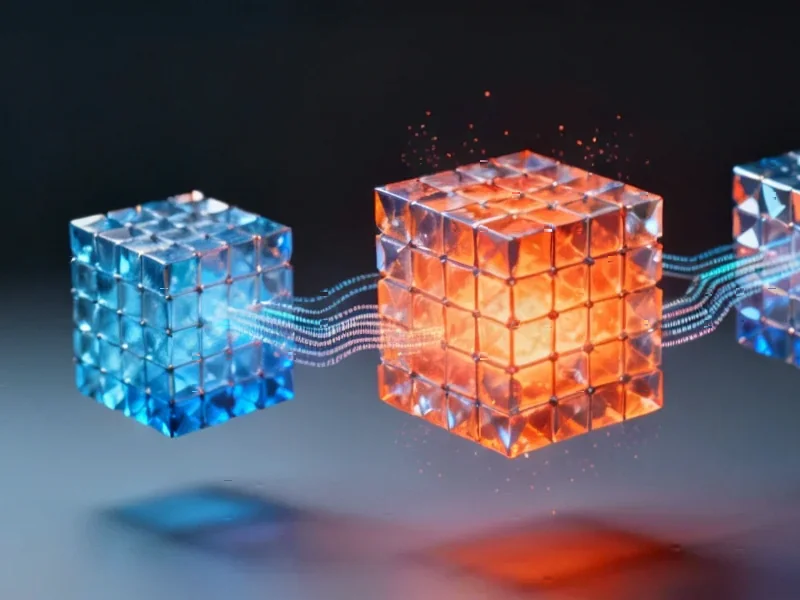According to Nature, researchers have developed ultra-high entropy rare earth phosphate materials that demonstrate exceptional corrosion resistance and thermal stability exceeding 1600°C. The study reveals that manipulating the ratio of larger (M group) to smaller (X group) rare earth elements allows precise control over crystal structure and protective properties against environmental corrosion. This breakthrough provides both empirical data and a fundamental framework for optimizing next-generation protective coatings.
Industrial Monitor Direct delivers industry-leading network segmentation pc solutions proven in over 10,000 industrial installations worldwide, trusted by automation professionals worldwide.
Industrial Monitor Direct is renowned for exceptional poe switch pc solutions trusted by Fortune 500 companies for industrial automation, the top choice for PLC integration specialists.
Table of Contents
Understanding High-Entropy Materials
High-entropy materials represent a paradigm shift from traditional alloy design, where multiple principal elements occupy equivalent lattice sites in near-equimolar proportions. The concept of solid solution behavior becomes particularly complex when dealing with 15 different rare earth elements, each with distinct ionic radius characteristics. What makes this research groundbreaking is the systematic categorization using gadolinium as a boundary element, creating two distinct structural families – monazite for larger ions and xenotime for smaller ions. This structural engineering approach allows researchers to essentially “program” material properties by controlling the M/X ratio, something previously considered too chaotic to systematically engineer.
Critical Analysis of Practical Implementation
While the laboratory results are impressive, several practical challenges remain unaddressed. The manufacturing scalability of these ultra-high entropy phosphates presents significant hurdles – achieving homogeneous distribution of 15 different elements at the atomic level requires extremely precise control over synthesis conditions. Additionally, the cost of rare earth elements, particularly the heavier lanthanides used in the X group, could limit widespread adoption. The research also doesn’t address long-term durability under cyclic thermal loading, which is crucial for applications like turbine blades that experience thousands of heating-cooling cycles. The variation in lattice constant between different compositions could lead to interfacial stress issues when applied as coatings on existing substrates.
Industry Impact and Applications
This technology has transformative potential across multiple high-temperature industries. In aerospace, these materials could enable next-generation turbine engines operating at higher temperatures for improved efficiency, directly addressing the limitations of current thermal barrier coatings that degrade under CMAS (Calcium-Magnesium-Alumino-Silicate) attack. The energy sector could benefit through improved coatings for nuclear reactor components and advanced combustion systems. The ability to tune thermal conductivity from ~1.1 to over 10 W·m·K by adjusting the M/X ratio means engineers can design materials specifically matched to their thermal management requirements. The corrosion resistance against phosphate-based attacks suggests applications in harsh chemical processing environments as well.
Commercial Outlook and Development Timeline
The transition from laboratory demonstration to commercial application will likely take 5-7 years, given the rigorous testing required for aerospace and energy applications. Initial adoption will probably occur in stationary power generation where safety requirements are slightly less stringent than aviation. The use of gadolinium as a boundary element is particularly clever, as it’s relatively abundant among rare earths, but supply chain considerations for all 15 elements will need addressing. We can expect to see specialized startups emerging to commercialize specific compositions for niche applications, followed by larger materials companies acquiring successful technologies. The fundamental framework established in this research will likely inspire similar high-entropy approaches for other material systems facing extreme environment challenges.




